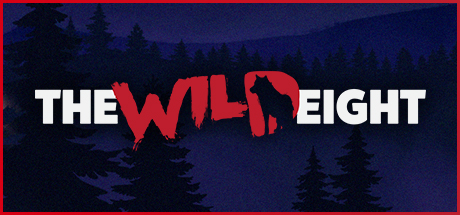What is the Wild without any animals? Today we’ve got for you a mighty informative post about animals of The Wild Eight with the real-life facts about them!
Sitka Black-tailed Deer

The Sitka Black-tailed Deers are native to the Alaskan wilds. Over the years their range of habitat expanded and now they can be found in the land’s many coastal forests. However, due to their diet, their population heavily depends on the severity of winters.
Since in The Wild Eight the spring might never come, in-game deers can be considered endangered species! Their only sustainable in-game source of food are those northern berries and mushrooms — which are constantly getting plucked by the players. Maybe that’s why it’s so much easier to tame them in The Wild Eight than in real life? So don’t forget to feed your pet deer well — you might be its last hope for survival!
Interior Alaskan Wolf

Despite its name, the Interior Alaskan Wolf is not even close to becoming domesticated and is instead called like this for inhabiting the interior part of the Alaskan wilds. They differ from their North American counterparts by a longer skull with bigger and heavier teeth in both jaws. Alaskan wolves have a very bloody history — they were hunted extensively even before Alaska became a part of USA. They mostly rely on migrating caribou as a source of food. And this led people to believe that sudden drop in numbers for caribou herds was caused by wolf overpopulation.
While this is turned out to be mostly untrue in case of the real-life Alaskan wolves, in The Wild Eight they pose an immense threat! Especially for the players in the early stages of the game. However, there is very little food for them around, so they might be just incredibly hungry and not necessary bloodthirsty. Tame a wolf and treat it well — and you’ve got yourself the most loyal and powerful ally!
Brown Bears

There are multiple subspecies of brown bears scattered across Alaska and its archipelagos. Dall Island brown bear which has a broader skull and almost black fur. The infamous grizzly bear with its slightly concave face, a distinctive hump between shoulders and noticeably longer claws. Kodiak bear that’s inhabiting the Kodiak Archipelago for more than 10 000 years and can sometimes compete with polar bears in size. And the Sitka brown bears that look a lot like Alaskan grizzly, but inhabit only the Alexander Archipelago.
Apart from varying appearance, everything else about the brown bears is mostly the same -- they’re omnivorous, go into hibernation for winter, and are very protective of their cubs. The biggest threat to brown bears is industrial logging. And we all know that some players in The Wild Eight mow down trees faster than any industry can. Be mindful of the bears!
Alaskan hare

Also known as Tundra hare, has shorter ears compared to a normal hare and changes the colour of its fur through the year. It has brown fur with white underparts in the summer and fully white coat with dark ears in the winter. Tundra hare, unlike a common one, doesn’t nest in a burrow but instead hides between the rocks and bushes of the Alaskan tundra.
In The Wild Eight Alaskan hares are heartless monsters. These little devils run away slow enough to look like a potential catch but are too fast to be actually caught by the player without any equipment. Teasing and exhausting the unfortunate survivors, hares lead to hundreds of deaths among the newer players [1].
Alaskan Red Fox

Another species of a canine family famous for their dexterity. Red foxes are introduced species and were brought to Alaska to be farmed for their pelts in 20th century. Wild foxes are not the strongest animals, so they usually run away from anything that can pose a threat — including humans. Foxes are omnivores and easily adapt to any surroundings — so easy, in fact, that they can harm the ecosystem in some cases.
In the case of The Wild Eight, nothing threatens foxes unless survivors are planning to hunt them for those sick fox-tail hats.
Boars or wild hogs

The population of wild hogs in Alaska is rather small and kept this way on purpose. These animals are considered highly invasive species that hurt the ecosystem on many levels. They uproot plant life, eat eggs of low nesting birds and even destroy crops in farmlands. Because of this, a hunting season for hogs is always open to prevent them from overbreeding.
While in-game boars don’t cause any problems unless provoked, players at least can hunt them without having any regrets! Just make sure that you have an actual weapon equipped and not your pickaxe.
